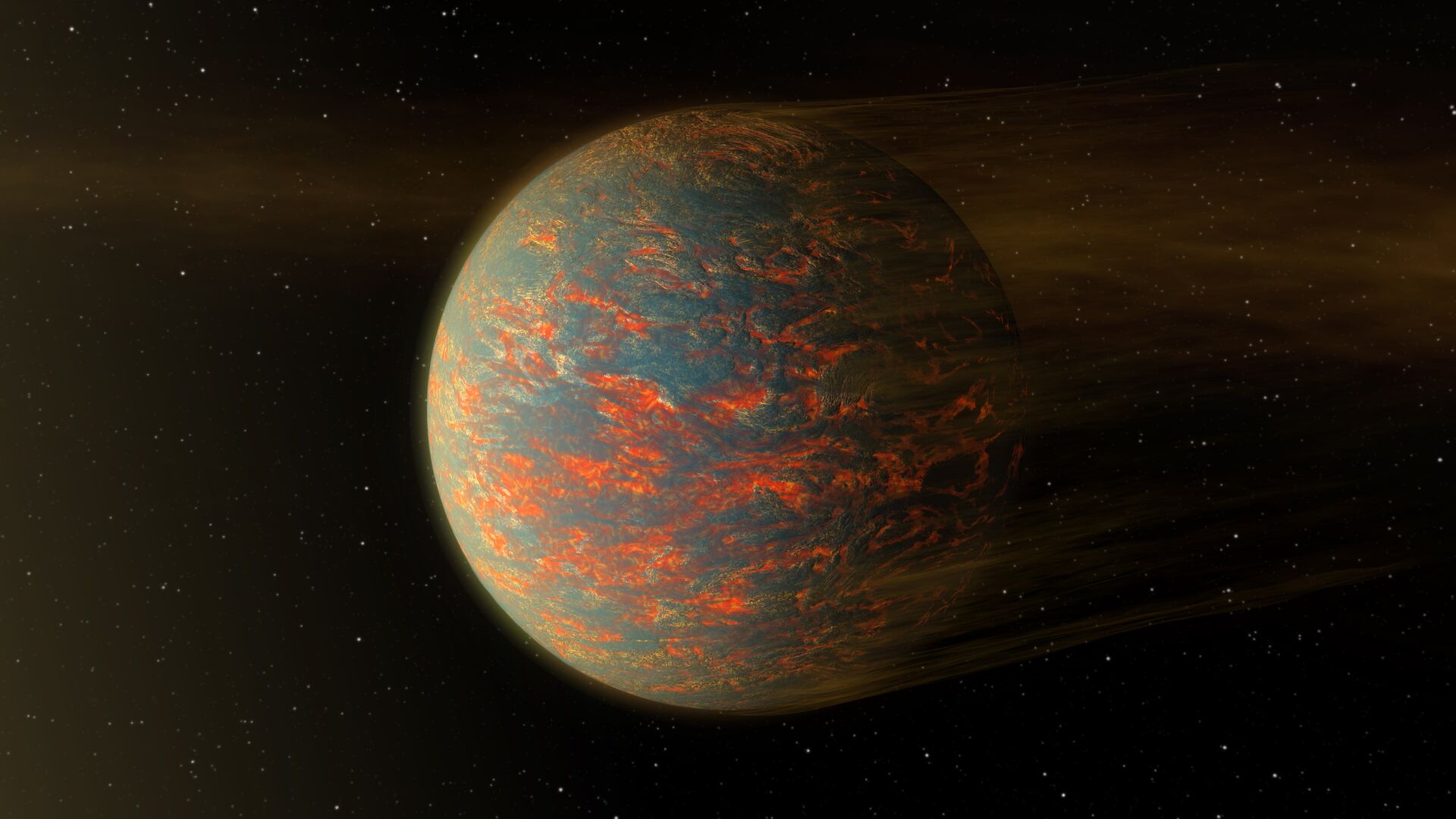https://sputnikglobe.com/20221209/scientists-probe-secrets-of-hellish-planet-where-nothing-we-know-of-could-survive-1105280949.html
Scientists Probe Secrets of Hellish Planet Where 'Nothing We Know of Could Survive'
Scientists Probe Secrets of Hellish Planet Where 'Nothing We Know of Could Survive'
Sputnik International
The researchers conducted their study by measuring the light emitted by the planet's host star, gauging how that light dimmed when the planet was passing... 09.12.2022, Sputnik International
2022-12-09T17:23+0000
2022-12-09T17:23+0000
2022-12-09T17:23+0000
science & tech
planet
hot
orbit
study
https://cdn1.img.sputnikglobe.com/img/103724/54/1037245454_0:0:3840:2160_1920x0_80_0_0_0453d180639c552ca0f930aca5210fd2.jpg
A team of researchers in the United States has managed to gain new insight into the nature and origin of an extremely hot planet that orbits a distant star in the constellation Cancer.The planet, known as 55 Cancri e or Janssen, is located in a binary star system 55 Cancri comprised of a K-type star 55 Cancri A (also known simply as Copernicus), which Janssen orbits, and a red dwarf star 55 Cancri B.While Janssen orbits its host star at a very close distance, completing one rotation around it in only 18 hours, the researcher team suspects that the planet originally formed at a more distant orbit but eventually moved closer to the Copernicus due to the latter’s gravitational pull.She did note, however, that even in its original orbit Janssen was “likely so hot that nothing we’re aware of would be able to survive on the surface.”The researchers arrived at their conclusions by measuring the light emitted by Copernicus and taking note of how that light dipped when Janssen came between its host star and Earth.The data obtained by the scientists may help us understand better how planets are formed, the press release pointed out, while the team behind the study now turns its attention towards other planets.As Zhao explained, they hope to “find planetary systems similar to ours” and to “better understand the systems that we do know about.”
https://sputnikglobe.com/20221020/its-a-marshmallow-world-astronomers-find-fluffy-exoplanet-with-density-of-sweet-treat-1102478799.html
Sputnik International
feedback@sputniknews.com
+74956456601
MIA „Rossiya Segodnya“
2022
News
en_EN
Sputnik International
feedback@sputniknews.com
+74956456601
MIA „Rossiya Segodnya“
Sputnik International
feedback@sputniknews.com
+74956456601
MIA „Rossiya Segodnya“
science & tech, planet, hot, orbit, study
science & tech, planet, hot, orbit, study
Scientists Probe Secrets of Hellish Planet Where 'Nothing We Know of Could Survive'
The researchers conducted their study by measuring the light emitted by the planet's host star, gauging how that light dimmed when the planet was passing between the star and Earth.
A team of researchers in the United States has managed to gain new insight into the nature and origin of an extremely hot planet that orbits a distant star in the constellation Cancer.
The planet, known as 55 Cancri e or Janssen, is located in a binary star system 55 Cancri comprised of a K-type star 55 Cancri A (also known simply as Copernicus), which Janssen orbits, and a red dwarf star 55 Cancri B.
While Janssen orbits its host star at a very close distance, completing one rotation around it in only 18 hours, the researcher team suspects that the planet originally formed at a more distant orbit but eventually moved closer to the Copernicus due to the latter’s gravitational pull.
“We’ve learned about how this multi-planet system — one of the systems with the most planets that we’ve found — got into its current state,” Lily Zhao, research fellow at the Flatiron Institute’s Center for Computational Astrophysics and lead author of the new study, said in a press release.
She did note, however, that even in its original orbit Janssen was “likely so hot that nothing we’re aware of would be able to survive on the surface.”

20 October 2022, 20:33 GMT
The researchers arrived at their conclusions by measuring the light emitted by Copernicus and taking note of how that light dipped when Janssen came between its host star and Earth.
The data obtained by the scientists may help us understand better how planets are formed, the press release pointed out, while the team behind the study now turns its attention towards other planets.
As Zhao explained, they hope to “find planetary systems similar to ours” and to “better understand the systems that we do know about.”


